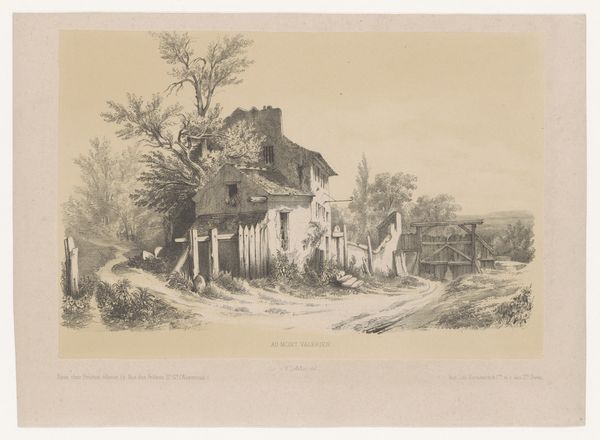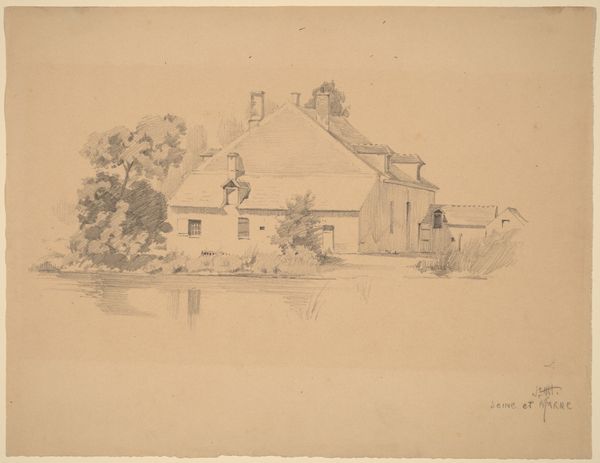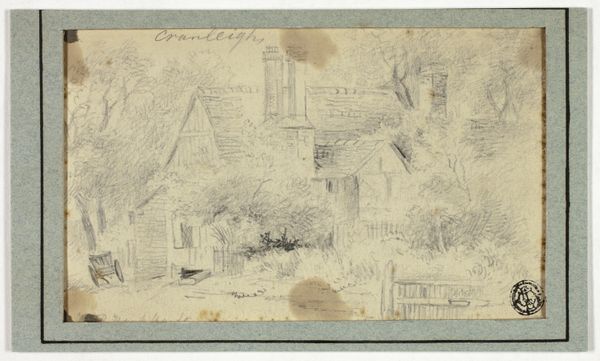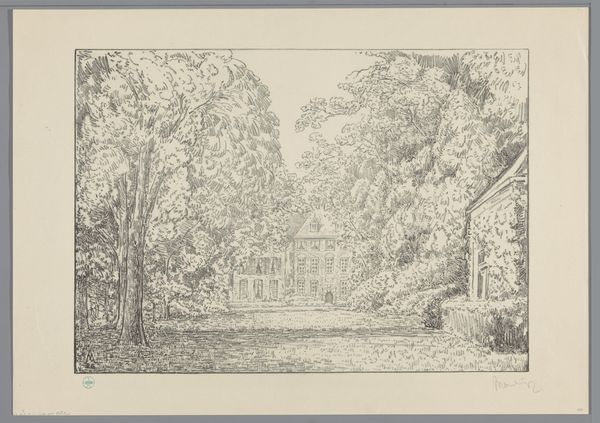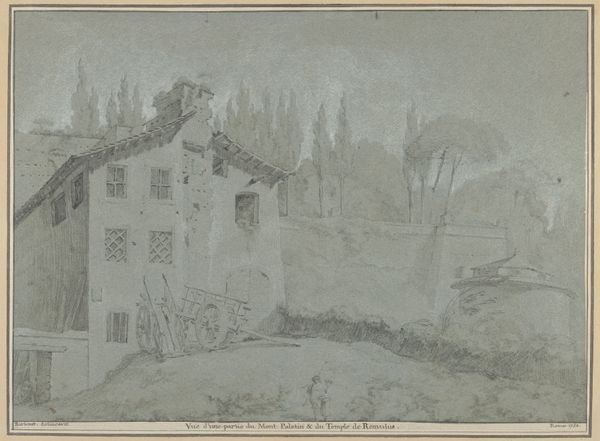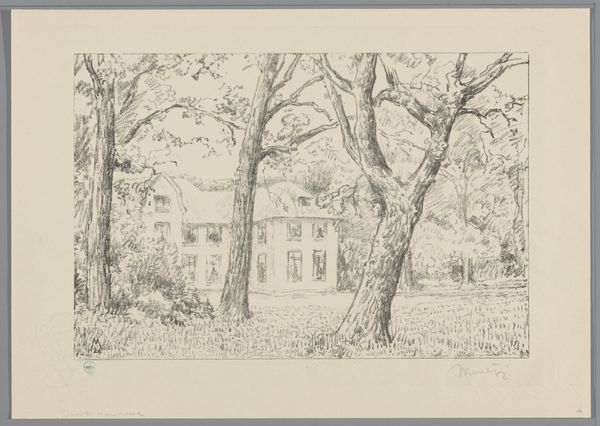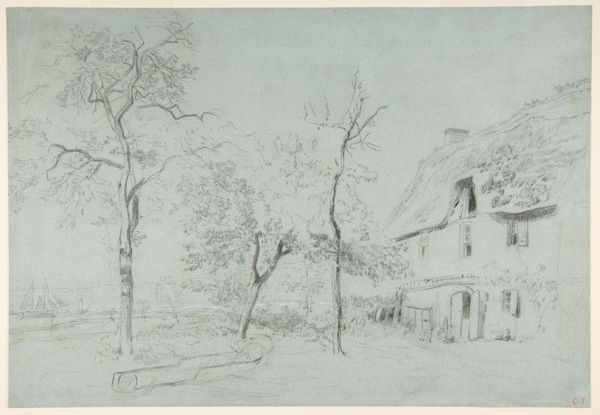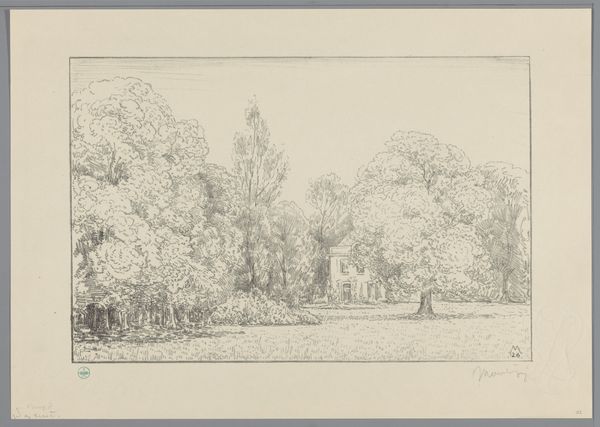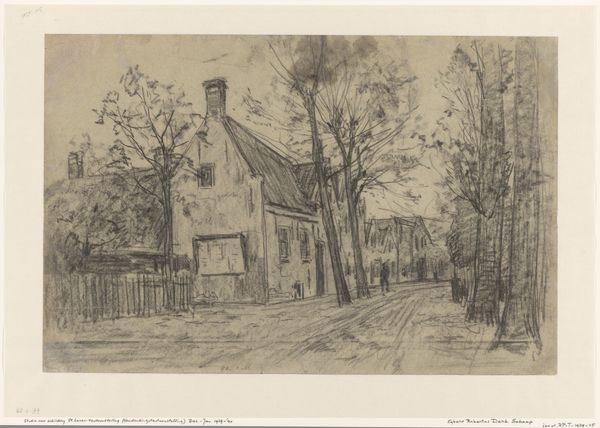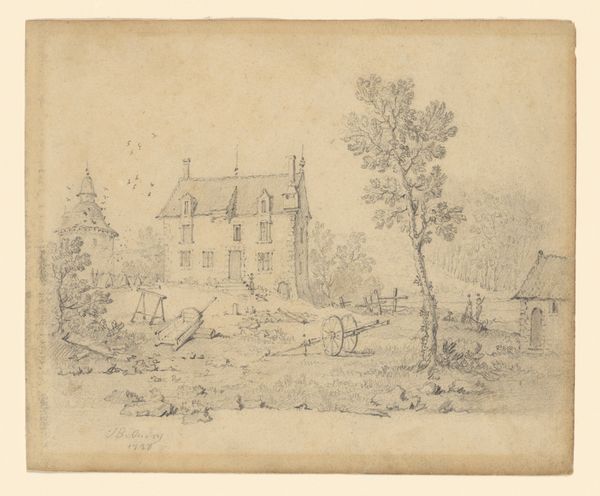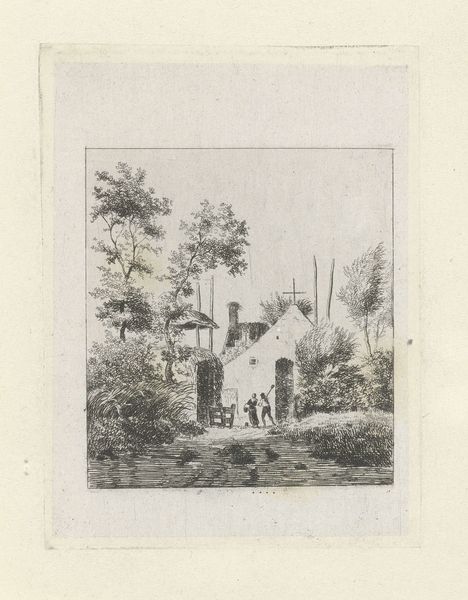
Copyright: Public Domain
Curator: Up next we have "The Hermitage near Albano," a pencil drawing on paper by Nikolaus Hoff, created around 1825. Editor: It’s very faint at first glance. But once your eyes adjust, you can discern a layered and very textured Romantic landscape… There’s a real sense of hushed mystery here, like the scene holds a secret. Curator: Indeed. Hoff, part of the Romantic movement, used pencil to evoke a specific mood tied to the place. Consider how the hermitage—historically a solitary or religious retreat—plays into that yearning for isolation and reflection. Editor: The actual material also affects how we read into that theme. It looks like standard writing paper, meant for taking quick notes; there’s something fascinating in this ordinary surface showcasing a potentially sublime experience. You've got architecture in what I’m guessing is Italy rendered as just another thing observed and recorded—no highfalutin pronouncements about its artistry needed here. It seems the focus on utility over pure artistic skill invites contemplation. Curator: Absolutely, and that's beautifully said. Note how he places the hermitage within a thicket of trees and foliage. Symbolically, nature envelops human construction, blurring the line between them, which further suggests humankind's interconnectedness. Editor: Interconnectedness… I see the structure seems almost overtaken; less prominent somehow amidst the unruly growth. So maybe he wanted us to consider an entirely different relationship altogether, where the material realities have shifted priorities towards acknowledging such forces? Curator: The soft lines also serve. Look how those wispy branches appear to both conceal and reveal the hermitage. It’s like accessing hidden truths, isn't it? Editor: Yes, or witnessing an organic decay occurring in slow motion where its forms get literally eaten away. It shows us a specific making process where labor takes a backseat during what will come naturally regardless because time eventually comes. Curator: This piece asks questions. Hopefully, these layers gave everyone some food for thought. Editor: And, more importantly, made the everyday a little less overlooked.
Comments
No comments
Be the first to comment and join the conversation on the ultimate creative platform.
